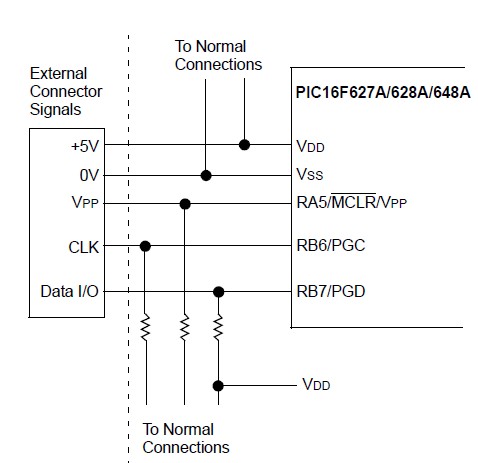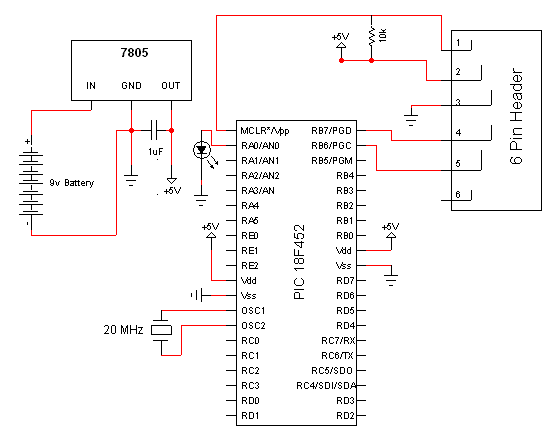

- #PIC16F628A SERIAL PROGRAMMER UPDATE#
- #PIC16F628A SERIAL PROGRAMMER CODE#
- #PIC16F628A SERIAL PROGRAMMER PC#
- #PIC16F628A SERIAL PROGRAMMER FREE#
#PIC16F628A SERIAL PROGRAMMER CODE#
A good idea is to write the version number of your code on a sticker placed on the PIC along with a series of characters and numbers to reference your source code and project. The PIC's that use flash memory to store its code can be written to about 1000 times so that is a big bonus for flash PIC's.

#PIC16F628A SERIAL PROGRAMMER UPDATE#
If need be, you can put the PIC back into the programmer and update its code, perhaps to fix a bug that you have found or to change a timing value. When you are happy the PIC is behaving as it should, you can then take the PIC out of the programmer and place it in your own circuit.
#PIC16F628A SERIAL PROGRAMMER FREE#
MPLAB is a free PIC development IDE by Microchip which you can use for writing the PIC code, testing it and to convert to PIC code ready to be written to your PIC. You can also debug your code on your computer which will at least lets you check that your code is running as it should. Most programmers allow the PIC to then be tested by providing a number of switches and lights but depending on what you want the PIC to do and what testing features the programmer offers will determine how useful the programmer is for testing the PIC. Either way, the code you write gets converted to machine code which is then 'burned' to your PIC. The advantage of high level programming languages is that they are much easier for beginners to learn, however, especially with the more basic PIC's, there is little space for code so using assembly has the advantage of making better use of the limited memory.
#PIC16F628A SERIAL PROGRAMMER PC#
Please note that 0x is used to denote hex values.Ī PIC microcontroller is programmed using a programmer connected to a PC with the information from a file that was produced from code written using either a low level programming language (assembly) or a high level language, such as C or BASIC. On this page you will find useful information about PIC microcontrollers with tips, troubleshooting and projects.

A typical PIC contains on-board flash memory for the programming code (there are one time programmable and UV erasable versions too), EEPROM for storing settings and other useful data, a section of RAM (referred to as a collection of file registers), timers, analog comparators and bi-directional input/output ports. The PIC microcontrollers range from basic to very complex devices yet even the most basic PIC's offer a lot for your money. But by using a PIC microcontroller, the task becomes much simpler and the number of components and the complexity of the circuit greatly drops, as the PIC does a lot of the hard work. A good example is my traffic light project (which is on this page) to create a set of traffic lights using logic and timing components alone is quite tricky, especially if you was to realistically emulate a typical traffic light sequence. The family of PIC microcontrollers were first made by the company Microchip (there are now clones by other companies) and have since become very popular by both the electronics industry and hobbyists because they offer so much on one chip which makes complex circuits much easier.


 0 kommentar(er)
0 kommentar(er)
